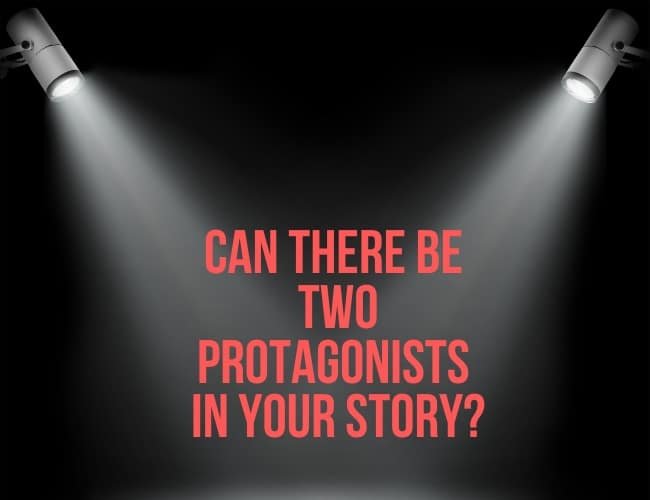We all recognize a protagonist when we meet one—whether it’s Katniss Everdeen rising against dystopian oppression or Harry Potter taking on the dark wizard who shaped his fate. The protagonist is the heartbeat of a story, the character whose journey defines the emotional and narrative arc. But what happens when more than one heartbeat echoes through your plot? Can a story thrive with two protagonists? The answer is yes—but only under the right circumstances.
Let’s explore what makes a character the protagonist, when a story benefits from having more than one, and how to make sure your multiple leads actually serve the narrative rather than muddle it.
What Is a Protagonist, Really?
It might seem straightforward to call your protagonist the “main character,” but that label can be deceiving. Stephen Koch offers perhaps the most helpful definition: the protagonist is the character whose fate matters most to the story. This person isn’t necessarily the narrator, the hero, or the most likable. In The Great Gatsby, for instance, Nick Carraway tells the story, but Jay Gatsby is the character whose rise and fall define the narrative. Likewise, Macbeth is the central character in Shakespeare’s play, but no one would confuse him with a traditional hero.
The protagonist defines the plot. Their decisions drive the story forward. Their transformation—or lack thereof—anchors the emotional weight of the narrative. Understanding this allows us to determine whether more than one character can hold this crucial role.
Can There Be Two Protagonists?
Yes. Some stories require more than one protagonist. But this isn’t a creative free-for-all—there are clear indicators that signal when multiple protagonists make sense.
Here are three essential conditions that must be met:
1. Your Story Uses Multiple Points of View (POVs)
Multiple protagonists mean multiple perspectives. Each lead character must have a POV that allows readers to experience their thoughts, choices, and growth. That said, just because a story has multiple POVs doesn’t mean it has multiple protagonists.
Take Hamilton, the Broadway musical. While the narrative includes various perspectives—Aaron Burr, Eliza Hamilton, Thomas Jefferson—they all orbit around Alexander Hamilton’s rise and fall. Burr may provide emotional complexity, but Hamilton’s fate is the engine of the story. That makes Hamilton the sole protagonist.
Contrast that with Romeo and Juliet, where both lovers share the narrative spotlight. Their stories are tightly woven, and each character’s choices equally influence the final tragedy. Here, two protagonists are necessary to create the full emotional experience.
2. Each Protagonist Has a Distinct Arc That Shapes the Plot
Having two main characters only works if each one experiences meaningful change and contributes to the central storyline. This isn’t about doubling the character count—it’s about doubling the narrative depth.
A perfect example is The Nightingale by Kristin Hannah. The novel follows two sisters, Vianne and Isabelle, during World War II. They live separate lives and make very different choices, but their arcs are equally important. Their experiences reflect contrasting approaches to resistance, sacrifice, and survival. Importantly, their journeys converge emotionally and thematically in the end, delivering a cathartic payoff for the reader.
On the flip side, if your characters’ arcs remain entirely separate or fail to interact meaningfully, it may be wiser to split the story into two different books.
3. The Genre Supports It
Certain genres lend themselves naturally to stories with multiple protagonists. Romance is a prime example, where dual POVs—one for each romantic lead—are a common convention. Both characters typically undergo individual arcs that culminate in their shared resolution.
Similarly, “buddy stories” (think The Odd Couple or Lethal Weapon) rely on the interplay between two central figures. Ensemble narratives, often found in literary fiction (The Joy Luck Club, The Yacoubian Building), may spotlight several characters initially but eventually guide readers to focus on one or two key protagonists by the story’s end.
That said, not all genres benefit from this structure. Thrillers, mysteries, and most young adult fiction often work best with a single protagonist to keep the tension tight and the pacing lean.
When Not to Use Multiple Protagonists
While dual (or more) protagonists can enrich a story, the structure isn’t for everyone—and certainly not for every story. If your plot can be effectively told through one character’s decisions and development, stick with a single protagonist. It’s simpler, cleaner, and far easier to manage, especially for new writers.
Also avoid using multiple protagonists if:
- One character’s fate clearly matters more than the other’s.
- Only one character undergoes a significant transformation.
- The arcs don’t converge meaningfully in the climax.
- The narrative becomes bloated or confusing.
Writing a multi-protagonist story is like conducting a duet: both voices must be distinct, harmonious, and necessary.
The Protagonist Must Choose
Whether you write with one protagonist or two, the most crucial narrative requirement remains the same: your protagonist must make choices. And those choices must carry consequences.
Passive characters may appear in stories, but protagonists cannot be passive. They must engage with the plot, confront challenges, and make decisions that shape their own destiny. This is what gives your story its emotional weight and what keeps your readers invested.
Final Thoughts: Should You Use Multiple Protagonists?
Most stories—roughly 85%—will be better served by a single protagonist. The simplicity allows for tighter plotting and deeper emotional focus. However, if your story genuinely requires multiple points of view, if each character has a strong arc, and if the genre supports it, multiple protagonists can elevate your narrative to something layered and unforgettable.
The key is intentionality. Don’t add extra protagonists to spice up your story. Do it only when your plot demands it and when you can deliver a cohesive, emotionally satisfying experience for your reader.
Because in the end, whether it’s one heart or two driving your story—what matters is that the reader feels it beat.


